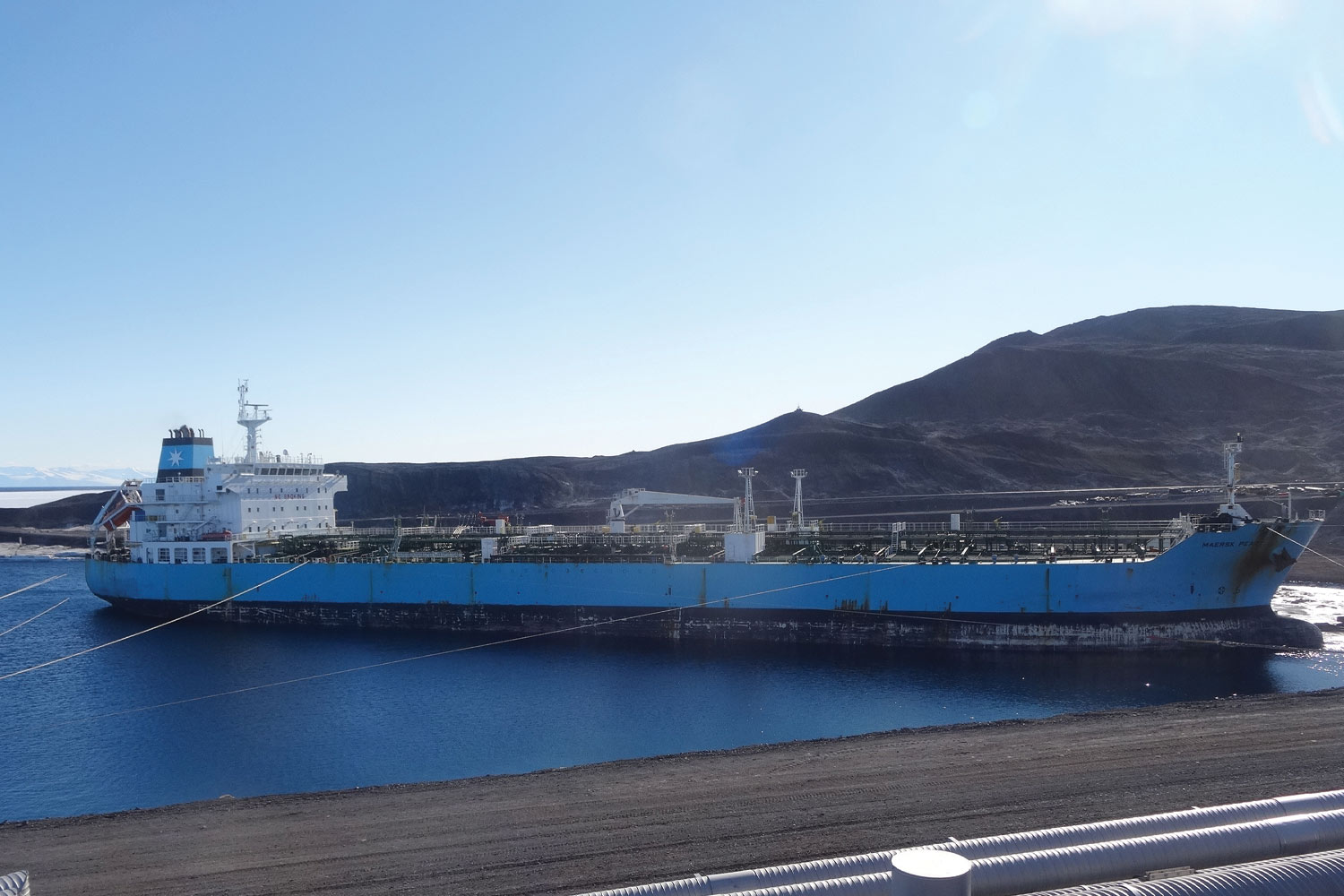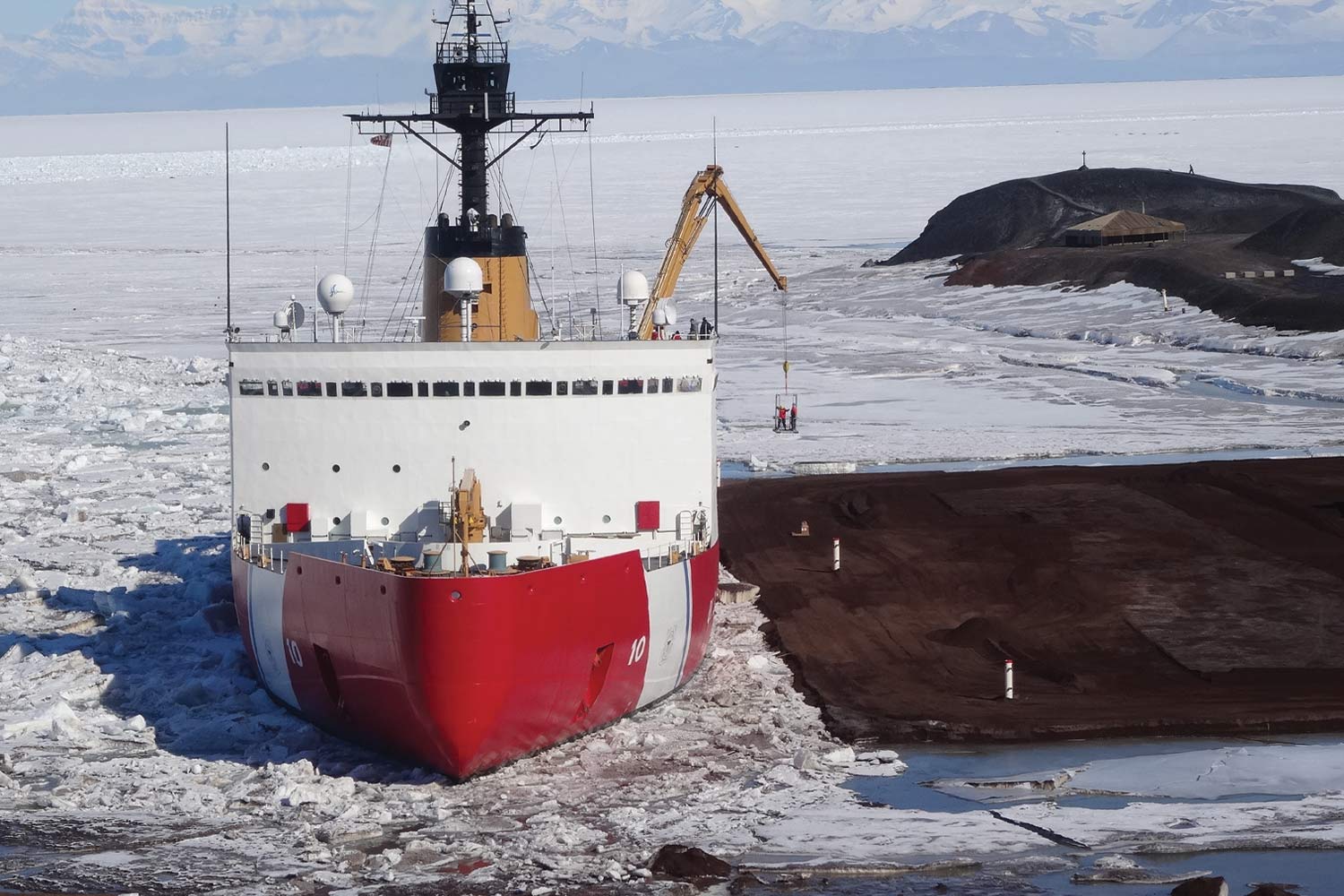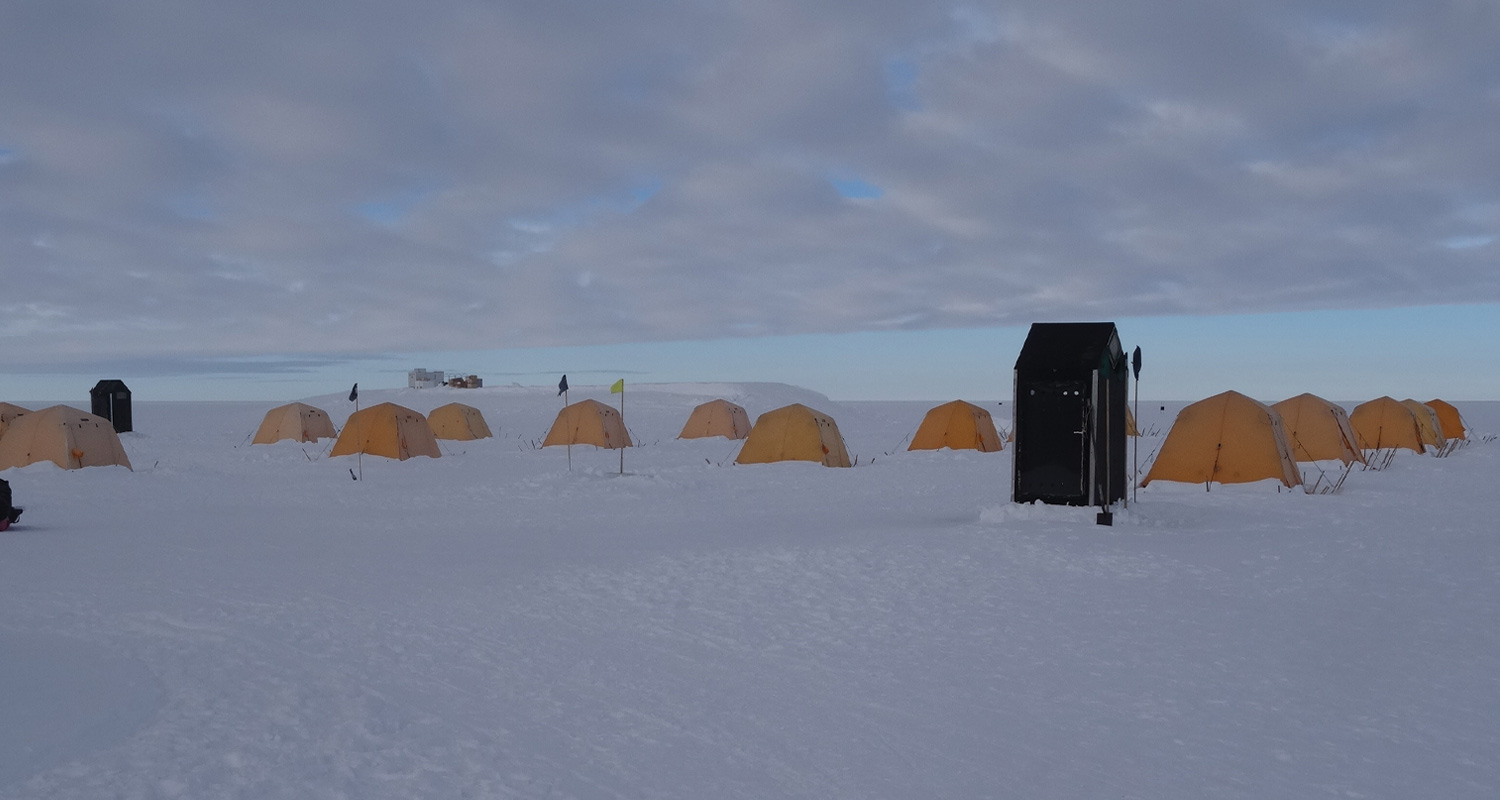Permafrost, and
Low Oxygen
he Arctic’s harsh climate not only includes extreme variations in light and temperature but also extensive snow and ice cover, large areas of permafrost, and short working seasons. Parts of the area can be extremely fragile, requiring those who work there to take the utmost precautions when it comes to preserving the pristine environment.
Development is limited in many ways: by the need to protect and preserve the unique ecosystem and by logistical challenges, including the lack of roads, ability to transport materials and equipment, and the exorbitant cost of doing business. For this reason, many companies choose to work with Arctic specialists who possess both an understanding of the landscape as well as invaluable experience in this demanding region.
“To be an Arctic specialist, one has to have experience with cold climate means, methods, and materials applications in the Arctic, as well as an understanding of the logistics challenges,” explains Richard S. Armstrong, founder of RSA Engineering. “For village projects, this requires a knowledge of available technology, technicians, parts, and equipment, as well as understanding that simplicity in design and maintainability is essential for remote Arctic locations.”
Through these projects, Armstrong has been involved in almost every aspect of cold climate monitoring and development, including permafrost melting forecasting and adjudication; solid and liquid waste disposal; and finding solutions to high-altitude, extreme cold impacts on equipment and combustion processes.
“The South Pole is 9,200 feet above sea level and is covered in almost 10,000 feet of ice, which combine to cause significant low pressure problems; there is not enough oxygen in the air to provide good combustion,” Armstrong says. “The effect of having less oxygen on any combustion product, whether boilers, furnaces, or truck engines, is that they lose quite a bit of power at these higher altitudes.”
He adds that understanding how combustion systems work in this atmosphere is imperative.
Arctic Data Services
Richard Armstrong

Richard Armstrong.
“The landfill was capped with 8 million cubic yards of refuse in 1987, and it was expected that after twenty-five years, gas generation would stop,” he says. “That sucker is still generating methane.”
Richard Armstrong

Richard Armstrong
Structural failures resulting from melting permafrost are also a huge concern when building in colder climes. In many places in western Alaska, for example, roads and runways are built on permafrost, which causes problems as the climate heats up.
“Even at 31.5°F, you only have marginal permafrost, which melts like an ice cream cone,” says Armstrong. “As a result, structural capacity is lost and you have road erosion and foundation failures where houses sink into the ground.
To prevent these types of issues, professional engineers must take the Northern Design Course offered by the University of Alaska as a prerequisite to getting their licenses. “This covers electrical, mechanical, civil, and environmental issues, because people who work here need to understand everything from combustion issues to the fact that oil doesn’t flow at certain temperatures,” says Armstrong. “That knowledge is part of what makes an Arctic specialist.”
In addition to the International Code Council family of codes with Alaska amendments, Arctic specialists must also understand cold climate alternatives (engineered solutions to situations that do not work if done in strict accordance with code). For example, on remote Antarctic projects, these can include everything from exiting systems where snow drifting can block outward opening exit doors to alternate designs for combustion air inlets or alternate fire suppression systems for when prescribed water quantities are not available.
Richard Armstrong

Richard Armstrong.
Richard Armstrong

Richard Armstrong.
“In the North Slope Borough and in Summit Station in Greenland, one of the biggest concerns is to avoid contaminating the soil,” says Armstrong. “In areas where scientists are studying the atmosphere, you have to watch the wind direction to make sure to position combustion items in a way that they won’t contaminate the air sampling stations.”
In the South Pole, areas are out laid out in zones, he explains, including a quiet sector, clean air sector, and dark sector. “You have to really think through where you position things relative to the science that is going on,” he says. “For example, when a C-130 aircraft comes in on skis, it has to come from and depart from a certain direction so as not to contaminate the air sampling ports at air testing facilities.”
Testing itself is difficult; when scientists were mapping Antarctica, they wanted to see if there was any life in the streams that ran 10,000 feet under the ice. “One of the main challenges was making sure that when they penetrated the aquifer, they didn’t introduce any contaminants,” says Armstrong. “They had to take extra care to sterilize the hot water drills they were using and to make sure that they were using pure water that didn’t have any diesel or other contaminants in it.
“They also started drilling in the area where the subsurface water would be flowing out into the ocean and worked backwards toward the core of the continent so that if there was an environmental accident, it would only affect the water going downstream,” he adds.
Development in the Arctic requires following the science, and the need for accurate data can’t be underestimated.
Richard Armstrong

Richard Armstrong
“Collecting high quality data requires detailed planning, careful sample collection, understanding of remote logistics for shipping those samples, and high-quality lab work,” he continues.
He adds that when it comes to laboratory work, there is often a direct relationship between quality and cost, and paying for higher-quality data is well worth it considering the high cost of collecting samples in the Arctic.
Richard Armstrong

Richard Armstrong.
Despite the fact that quality data is so important to understanding remote locales, the lack of access and expense can sometimes limit what studies are done.
“Unfortunately, due to cost and location, remote areas don’t always get the attention they deserve,” says Guritz. “While there ought to be as much data collected at remote or rural contaminated sites as there is at sites around Fairbanks or Anchorage, on the whole, that’s generally not the case.”
And while the science is important, there are other considerations to take into account as well. “The measure of success isn’t always quantitative,” Guritz explains. “When you’re working in rural Alaska with Native communities, qualitative measures, such as community support and buy-in on a project, are super important as well.”
“In both Greenland and Antarctica, there has been significant loss of ice,” says Armstrong. “While these changes can be attributed to a number of different factors, global warming has contributed, at least in part, to issues including foundation degradation impacting buildings in permafrost thaw areas and the loss of structural integrity of roads, runways, and embankments due to thaw.”
One of the best ways to protect the Arctic is for those who work in the area, from environmental services companies and engineering firms to developers and scientists, to collaborate on projects that impact this unique ecosystem.
“As part of the NSF projects, I’ve been doing reviews of other people’s design work and have found that collaboration is key,” says Armstrong. “Working with others and asking, ‘Did you think about doing it this way?’ and explaining the reasons why goes a long way to getting where you need to be and allows everyone to fully understand the impacts of a project.
“The North Slope Borough does a lot of that, and more sophisticated private companies also do a peer review during development of designs,” he adds. “You pick up a lot of good ideas that way.”
Bringing the expertise of Arctic specialists to the table adds a unique point of view that can help save time, money, and the environment.
“There are quite a few firms in Alaska that are working in Antarctica and the Arctic, and we live and breathe this environment,” says Armstrong. “Bringing cold climate experts to the table is a good way to avoid mistakes.” ![]()